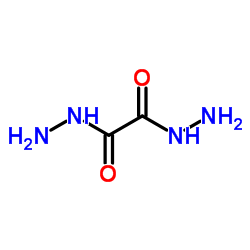Antimicrobial, spectral, magnetic and thermal studies of Cu(II), Ni(II), Co(II), UO(2)(VI) and Fe(III) complexes of the Schiff base derived from oxalylhydrazide.
Khlood Abou Melha
Index: J. Enzyme Inhib. Med. Chem. 23(2) , 285-95, (2008)
Full Text: HTML
Abstract
The Schiff base ligand, oxalyl [( 2 - hydroxybenzylidene) hydrazone] [corrected].H(2)L, and its Cu(II), Ni(II), Co(II), UO(2)(VI) and Fe(III) complexes were prepared and tested as antibacterial agents. The Schiff base acts as a dibasic tetra- or hexadentate ligand with metal cations in molar ratio 1:1 or 2:1 (M:L) to yield either mono- or binuclear complexes, respectively. The ligand and its metal complexes were characterized by elemental analyses, IR, (1)H NMR, Mass, and UV-Visible spectra and the magnetic moments and electrical conductance of the complexes were also determined. For binuclear complexes, the magnetic moments are quite low compared to the calculated value for two metal ions complexes and this shows antiferromagnetic interactions between the two adjacent metal ions. The ligand and its metal complexes were tested against a Gram + ve bacteria (Staphylococcus aureus), a Gram -ve bacteria (Escherichia coli), and a fungi (Candida albicans). The tested compounds exhibited high antibacterial activities.
Related Compounds
| Structure | Name/CAS No. | Molecular Formula | Articles |
|---|---|---|---|
 |
Ethanedihydrazide
CAS:996-98-5 |
C2H6N4O2 |
|
Efficient Delivery of DOX to Nuclei of Hepatic Carcinoma Cel...
2015-07-29 [ACS Appl. Mater. Interfaces 7 , 15855-65, (2015)] |
|
3-Hydroxypyridinium cross-links in lathyritic tissues.
1981-08-14 [Biochem. Biophys. Res. Commun. 101(3) , 1026-30, (1981)] |
|
Effect of different fuels on structural, thermo and photolum...
2012-10-01 [Spectrochim. Acta. A. Mol. Biomol. Spectrosc. 96 , 532-40, (2012)] |
|
Enriching carbonylated proteins inside a microchip through t...
2012-07-21 [Lab Chip 12(14) , 2526-32, (2012)] |
|
Antibacterial activity and spectral studies of trivalent chr...
2002-01-01 [J. Enzyme Inhib. Med. Chem. 24(3) , 883-9, (2009)] |